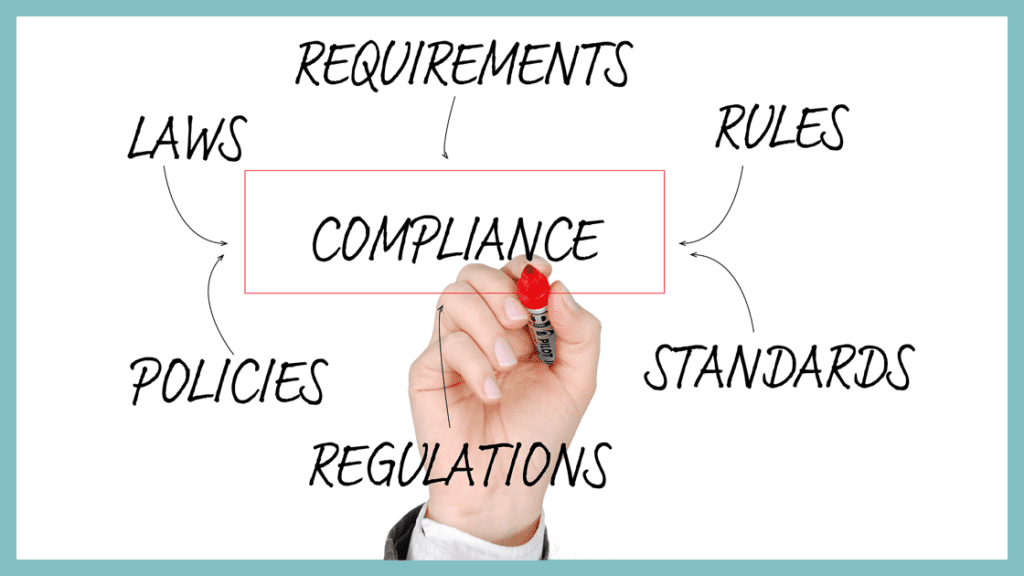A high-ranking government food policy leader once stated to me that their food companies didn’t “do GFSI” but did implement FSSC, SQF, IFS, BRC, or others. The leader didn’t know that GFSI is the benchmark for those food safety management systems. So, what is GFSI and its compliance requirements?
This question came up earlier today when I saw a Global Food Safety Initiative (GFSI) news alert that “Global Red Meat Standard (GRMS) Gains GFSI Recognition for Animal Conversion and Processing of Perishable Animal Products.” But what does this mean? Is the food company GFSI-compliant? GRMS-compliant? Actually, they meet the requirements of both. I will explain.
First, the Global Food Safety Initiative (GFSI) is an organization of food safety-focused companies that create the expectations for a food safety management system. The membership of GFSI equates to approximately 65+% of the world food trade – including most of the major food retailers and manufacturers who help their own supply chains become compliant. GFSI, itself, was created by members of the Consumer Goods Forum (CGF). The CGF membership includes CEOs of 350+ international consumer goods companies. Thus, the companies, themselves, created GFSI as a coordination and harmonization body for their own products.
Follow the logic steps below to understand the big picture:
- GFSI benchmarking documents create the overall expectations (which is why it is referred to as a “benchmark”).
- GSFI was created based on general ISO standards such as ISO 9000 Quality Management and ISO 31000 Risk Management. More directly, GFSI is based on ISO 22000 Food Safety Management Systems. There are also important insights from ISO 19011 Guidelines for Auditing Management Systems, and ISO 17025 Testing & Calibration Labs.
- GFSI is not a standard. Some companies specialize in creating and maintaining standards. In GFSI speak, the standard is a “Certification Program (CP),” and the company that created the CP is a “Certification Program Owner (CPO).”
- GFSI reviews the CP documentation to judge adherence to the goals and objectives of the GFSI Benchmark. After a successful review, GFSI would officially “recognize” the “certification program.” Now the program, such as GRMS, can state that they are “a GFSI recognized certification program.”
- A food company would select the most applicable standard and engage a CPO to implement a food safety management system standard. Different standards often focus on different types of food manufacturing or retailing.
- Next, the food company would hire a “Certification Body – CB” to audit and certify that their food safety management system meets the CPO requirements (which also meet the GFSI benchmark).
- After passing the audit by the CB, the food company can confirm and promote that they have adopted a GFSI compliant food safety management system.
- This compliance to a GFSI recognized program is vital since many (most?) food manufacturers and retailers require – NOT OPTIONAL – adherence to a recognized food safety management system. Often, a prerequisite to being an approved supplier is confirmation that a food company has a GFSI-endorsed food safety management system. For example, at the Food Safety Summit in 2018, the retailer Wegman’s explained that they had two tracks for food supplier approval. Track one was “GFSI compliant.” Track two was “soon to be GFSI compliant.” There was no track three for no GFSI compliance.
Two other Compliance Stakeholders: CODEX and ISO
Two other entities that are important for food safety standards are Codex Alimentarius [CODEX] and the International Standards Organization [ISO]
CODEX is the world food code led by the Food and Agricultural Organization of the United Nations [FAO] and the World Health Organization [WHO]. They create the “world food code” that forms the basic concept or recommendation about how food production and commerce should be carried out. Some countries adopt the CODEX food code as their national laws. Thus, CODEX is an important partner and leader since they are globally implemented.
From ISO: “ISO is an independent, non-governmental organization made up of members from the national standards bodies of 165 countries.” ISO creates a wide range of standards from background concepts such as terminology and definitions all the way to very detailed requirements for the management of systems or processes.

GFSI Benchmark Enables Customization
From GFSI: “GFSI, therefore, provides a framework for harmonizing food safety Certification Programmes, while leaving market demand to drive the creation of such programs. We selected this model for a number of important reasons, such as allowing for tailored programs based on industry sector, customers and regional needs.” [1]
GFSI Applied to Food Fraud Prevention
In the GFSI benchmarking document, and thus, required in the certification programs, are food fraud prevention requirements. GFSI requires a food fraud vulnerability assessment to identify the areas of concern, implement a food safety prevention strategy to implement and manage the program, and then confirm how these synchronize with the overall food safety management system. GFSI has confirmed – repeatedly and firmly – that competently addressing food fraud is a requirement of a compliant food safety management system.
So, for my government food policy leader colleague, I should have clarified that when someone refers to a “GFSI standard,” they are referring to a “GFSI endorsed standard.” Each of the stakeholders has a crucial role in protecting the food supply chain. The collaboration of all the entities has increased harmonization, which enables the sharing of best practices. Probably most important is that there is communication within the food industry for refining the actions, which increases the overall efficiency of everything.
Additional Resources
For more on the GFSI related food fraud prevention requirements, see:
- Primer on Food Fraud Compliance: https://www.foodfraudpreventionthinktank.com/primers/
- Food Fraud Audit Guide MOOC: www.FoodFraudMOOC.com
- GFSI Food Fraud Technical Document, May 2018, URL: https://mygfsi.com/wp-content/uploads/2019/09/Food-Fraud-GFSI-Technical-Document.pdf
- GFSI Food Fraud Position Paper, July 2014, URL: https://mygfsi.com/wp-content/uploads/2019/09/Food-Fraud-GFSI-Position-Paper.pdf
- GFSI Benchmarking Requirements, Version 2020, URL: https://o6sjjr51c02w1nyw2yk6jvmw-wpengine.netdna-ssl.com/wp-content/uploads/2020/02/GFSI-Benchmarking-Requirements-v2020.1-3.zip
- “[1]” GFSI Position on the co-existence of several food safety standards, May 2021, URL: https://mygfsi.com/wp-content/uploads/2021/05/1GFSI-position-on-the-co-existence-of-several-food-safety-standards20210519-CLEAN.pdf

